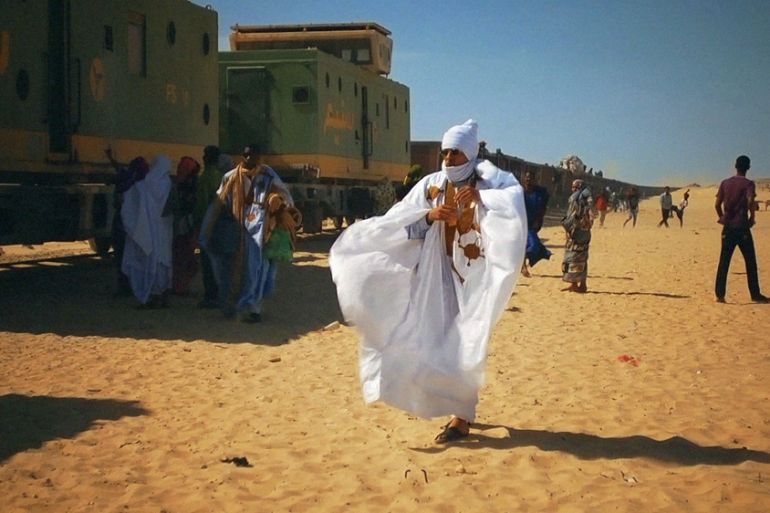
Days of Hope: From Mauritania to Copenhagen
An intimate look at the struggles of refugees and migrants travelling across the Mediterranean, from Africa to Europe.
Editor’s note: This film is no longer available online.
Every year, thousands of Africans leave their families behind and risk everything in the hope of making it to Europe for a better life.
Keep reading
list of 4 itemsUK passes law to send asylum seekers to Rwanda after months of wrangling
‘He was doing a moral thing’: Refugee jailed in Greece hopes to be freed
Rohingya in India accuse Modi of double standards on citizenship law
In 2014, more than 170,000 migrants made the perilous trip by boat, of which thousands of men, women and children died.
Ditte Haarlov Johnsen’s documentary, Days of Hope, moves between Mauritania, the starting point of the often fatal journey to Europe, to Italy’s detention centres where illegal boat refugees seek asylum, to the streets of Copenhagen, where reality hits the migrants.
This documentary tells the story of people who have escaped conflict and oppression in their homeland with the aim of providing their loved ones with a better future.
![Harouna left with the hope of finding a job so he can provide for his family back home [Ditte Haarlov Johnsen/Al Jazeera]](/wp-content/uploads/2015/06/6336415dd3094dc7ba5f46e2031b8ad6_18.jpeg)
FILMMAKER’S VIEW
By Ditte Haarlov Johnsen
Ever since I was a child, I always had a strong feeling of a line tugging from my heart to my left hand. These past years, when I am in the thick of photographing or filming, I sometimes get that feeling again.
I met Joao just after graduating from film school in 2007. He had come to Europe a few months prior on a raggedy and crammed small boat that had set off from Nouadhibou, Mauritania. His last job was at the Catholic cemetery where he would dig the graves for those of his friends who had not made it to Europe. He buried the dead bodies that had washed ashore, earning money to be able to pay for his own boat fare.
“The whole city smelled of death” he told me.
I was moved by his story. I thought if only I could find a grave digger in Nouadhibou then I could, in a simple way, convey the reality of people risking their lives searching for a better future by crossing the Mediterranean. I got in touch with Father Jerome from the Catholic Mission in Nouadhibou. He told me to come for a visit.
Meanwhile, I became involved in the making of a film about three young men from Greenland living in the streets of Copenhagen. It was supposed to take three months to complete. But it took three years. When I was finally ready to go to Nouadhibou, the route to Europe had been closed; The Spanish Guardia Civil and the European Frontex had joined forces patrolling the sea and a detention centre had been set up for people who were caught trying to cross.
I talked to Father Jerome, and again he told me to come for a visit, “There are plenty of stories to tell,” he said. And so because the story had been with me for so long and because I, despite the fact I had grown up in Africa, knew almost nothing about Mauritania, I had to go.
I arrived in Nouadhibou and found a town in which half of the population came from all over West and Central Africa. “United Nations of Nouadhibou” people called it. They had arrived with the intention to leave, but now they were stuck.
The new route was through the Sahara desert to Morocco or Libya and it was so much more dangerous and expensive. Jobs were hard to find. People spent their time waiting and praying. I met Harouna on the street one day. He was from Mali.
I felt a strong connection with him and by filming his search for a way out of Nouadhibou, I was able to capture part of the story I wanted to tell. I met other people along the way, whose stories weaved into Harouna’s.
After three months in Nouadhibou my camerawoman Minka and I went to Italy. It was important for me to follow up on the journey to Europe, so that the story would not be dismissed as “an African problem.” The idea was to film migrants arriving on the boats at Lampedusa. However, just before we arrived, Berlusconi declared a state of emergency, which made all filming impossible.
Instead, we ended up at an asylum centre in Syracuse, Sicily. We spent two weeks at the centre, amidst people that had survived the journey, and arrived in the “promised land,” only to find themselves locked up and facing an uncertain future. And yet there was still room for a vague hope of better days to come.
From Sicily we went to Copenhagen. Copenhagen is where I live and because this is where I have made films about the homeless and the sex workers, I was looking forward to the whole process of researching and filming. It is a place I know but it turned out to be the most difficult place to film.
The migrants that I met had typically been in Southern Europe for several years before ending up collecting bottles and sleeping in the streets. They were so disillusioned by their situation that the last they wanted was to have a camera pointed at them.
The last stop in Days of Hope is Copenhagen, but the journey continues. Reality will always be so much more desperate, crazy and harsh than anything I can get close enough to capturing with my camera.